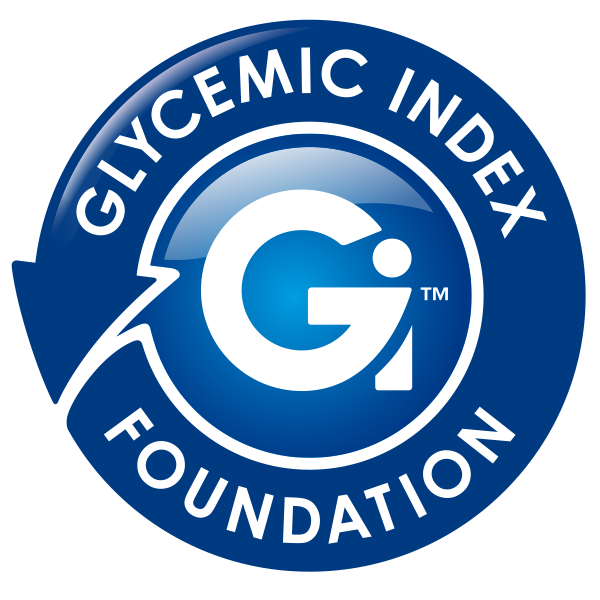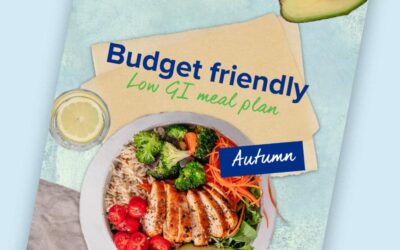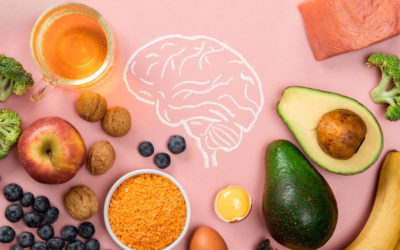Sugar & Sweeteners – The Sweet Truth
‘No sugar.’ ‘Sugar free.’ ‘Sugar is toxic.’ ‘Natural sugars.’ ‘Natural sweeteners’. Deciding what to put in your supermarket trolley can be a little tricky given the number of nutrient and health claims on sugar, often contradicting each other. Is sugar bad for us? Are sugar substitutes the way to go and if so, which one?
Not all sugars are the same
The sugar matrix in a banana is different to the one you find in a chocolate bar! Natural occurring sugars in fruit, dairy and wholegrains are part of a healthy balanced diet and are not cause for concern. They supply us with essential nutrients including vitamins, minerals, antioxidants, and dietary fibre and are part of the five food groups. Fruit contains a mixture of sucrose, fructose and glucose, while dairy foods (such as milk and yoghurt) contain lactose. Both fructose and lactose are also low GI (Glycemic Index), meaning they are digested or absorbed more slowly at a slower rate, prompting less fluctutation in blood sugars.
‘Added sugars’ are the ones we need to limit because they don’t automatically come with a package of micronutrients. Excess consumption is associated with negative health outcomes including obesity, type 2 diabetes, and tooth decay. The World Health Organisation (WHO) recommends to limit (but not avoid) foods with lots of ‘free or added sugar’ with little nutritional value such as confectionery, biscuits, cakes, desserts, and soft drinks. Free sugars also includes fruit juices, honey, maple syrup, coconut sugar, agave syrup, rice syrup and date syrup. While we still need to limit the amount eaten, floral honeys, agave syrup, date syrup and pure maple syrup are all low GI compared to white sugar which has a medium GI. They are also sweeter in taste and add flavour, so you often need less. Using a small amount in recipes means the total amount of calories and carbohydrate is lower which is a bonus if you are trying to manage weight and blood glucose levels.
How much sugar can we eat and what are the health effects?
Many of us know that eating too much of the sweet stuff is not good for our health yet it still manages to creep into the diet. In fact, the average Aussie consumes 50g* added sugars a day plus another 10g a day of free sugars from fruit juices and juice drinks. This is a total of 60g sugar per day (approx. 14 teaspoons sugar) which is around 22kg of sugar per year. The World Health Organisation recommendation is to limit sugar to less than 10% of energy (50g or 12 teaspoons), although they suggest that it might be even better to limit it to 5% (25g). To put this into perspective, one 600ml bottle of flavoured milk contains 8 teaspoons of sugar!
Should I avoid sugar?
Think moderation not avoidance. Adding a drizzle of honey to your morning porridge or yoghurt is completely fine and makes high fibre foods taste good. When it comes to special occasions such as Easter or a birthday, enjoying treats is not going to cause harm and is all part of a balanced diet. It is how often and how much we eat that can be a problem. Small treats may stop us from feeling deprived and thus less likely to binge. It is important to remember that a healthy balanced approach to food and health is an important message to teach our children who mimic what we do.
What about natural sweeteners?
In response to the growing prevalence of obesity and diabetes, natural sweeteners have gained popularity in the food market, offering calorie free, zero carbohydrate alternatives. No carbohydrates means it does not affect blood sugar levels so it can benefit people with diabetes. Many of these natural sweeteners come from plants and are intensely sweet tasting, which means you do not need much at all. Whilst the sweetness is extracted from plants, be aware that they are extracted, concentrated and added to food as purified steviol glycosides. Just as ‘added sugars’ need to be limited, the same applies to natural sweeteners. They may be sweeter than sugar and low calorie/carbohydrate, but it does not give us licence to eat excessive amounts.
Comparison of ‘added sugars’ and natural sweeteners
Here is a guide to the most popular ‘added sugars’ and natural sweeteners on the market including nutrition and GI value.
| Product | Fast facts | Nutrition Information | GI value |
| Sugar | In Australia, extracted from cane sugar and sugar beets in Europe | Per 100g 310 calories 100g carbohydrates |
Medium = 65 |
| Low GI cane sugar |
A natural raw cane brown sugar which is enriched in antioxidant derived from extracts of sugar cane. Consists of the anhydrous disaccharide sucrose, composed of the mono saccharides fructose and glucose as well as polyphenols. |
Per 100g 404 calories 97.7g carbohydrates |
Low GI = 51 |
| Honey |
|
Per 100g 337 calories 83.1 carbohydrates |
Low-medium GI = 45-60
Low GI Honey GI= 42 |
| Agave | A sweet liquid derived from a plant native to Mexico | Per 100g 309 calories 76g carbohydrates |
Low GI = 28 |
| Date syrup | A concentrated liquid 100% from dates | Per 100g 301 calories 74.2g carbohydrate |
|
| Stevia |
|
Calorie free Carbohydrate free Does not impact on blood sugar levels |
No GI value as zero grams of carbohydrates |
| Monk fruit |
|
Calorie free Carbohydrate free Does not impact on blood sugar levels |
No GI as zero grams of carbohydrates |
| Erythritol |
|
Almost calorie free 0.2g calories per gram. 4g carbohydrates per teaspoon |
No GI as low in carbohydrates |
Ideally, we need to train our tastebuds away from excessive sweetness by cutting down on how much and often we eat added and natural sweeteners. Adopting the 80/20 rule means that we base 80% of our diet on plant-based foods including vegetables, fruit, wholegrains, legumes and nuts/seeds and moderate amounts of healthy protein and fats/oils. The other 20% can be indulgences which may include ‘added sugars’ or products with natural sweeteners. For those wanting to better manage blood glucose levels, choosing a low GI option can help but remember it is the dose that makes the poison!
By Rebecca McPhee, Accredited Practising Dietitian (APD) & Health Coach Consultant.
Reference:
* Linggang Lei et al, Dietary Intake and Food Sources of Added Sugar in the Australian population. British Journal of Nutrition (2016), 115, 868-877.


